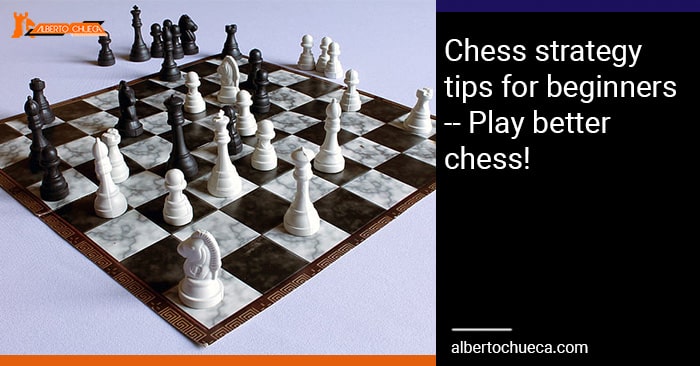Table of Contents
Maximize your chess using chess strategy
Do you know how the best chess players in the world win their games? It's generally not hanging mate in ones or simple tactics. Although, miscalculations do happen every now and then. Generally, the top chess players are able to accumulate small advantages, and simply win games from there, making no mistakes. Magnus Carlsen is notorious for that style of play.
You even notice at 1600-1800 ELO, if neither side makes any major mistakes, the game may be decided by who makes the best strategic decisions. That takes patience, as chess strategy is not the tactics and fireworks we are taught as young players! Let's first define what exactly chess strategy is.
What is chess strategy?
Before we get into chess strategy tips, we must define “chess strategy”. To put it into simple terms, chess strategy is advantages you can create without checkmating your opponent or winning material. It's the inverse to tactics. The idea behind chess strategy is that you will not immediately defeat your opponents using those concepts, but they will make your opponent's life just that more difficult now that they have to deal with such.
A key to chess strategy is optimizing your pieces. This article will be dedicated to using your pieces in the best way strategically, and how they can be applied for real gameplay.
Using your pawns
As the famous chess player, Francious Philidor said, “Pawns are the souls of chess“. Despite being the weakest piece on the board for what they do, it is vital to use your pawns wisely! Because they generally get stronger as they move up the board, and the pawns cannot move backward! There are certain pawn weaknesses, like doubled pawns, isolated pawns, etc, however, this article is devoted to maximizing your pieces!
What is a passed pawn? A passed pawn is one where there are no enemy pawns that can catch it. So only pieces can catch it. It can be very strong, especially in the endgame.
In the position above, Levon Aronian was White against Viswanathan Anand. Levon has a clear advantage due to his passed d-pawn, which helped him win the game.
The Knight outpost in chess strategy
The Knight is a very tricky piece, and when used properly, can be painful to deal with! One of the most efficient ways to utilize the Knight is to set up outposts for it. A Knight outpost is a situation where the Knight is defended by one or more pawns, relatively deep into the enemy camp, and an enemy pawn cannot attack it.
The position above is from a Sveshnikov Sicilian. White employs a common idea by trading the Bishop for the Knight, which is normally not accurate, but it allows for White to own the d5 square for the Knight. Black gets the Bishop pair, but White gets the outpost Knight, an interesting trade on both perspectives.
How is the Bishop most effective?
The Bishop partners with the Knight in that they are both worth approximately three points, though they are totally different pieces! The Knight is good in short-range distances where is can skit from one place to another. What about the Bishop? The Bishops work well on an open board with long-range mobility. If the position is closed, the Bishop will not thrive, due to lack of space.
See those wide-open light squares that the Bishop can pounce right on? The Bishop really flexes its muscles here, and the former world champion Alexander Alekhine went on to win the game shortly.
Rooks on the 7th rank!
Lastly, we will learn how to utilize our Rooks in chess strategy. We know the whole cliche sayings, “Rooks belong on open files“. However, let's make this session exciting, and show you some good pigs on the 7th!
Why are Rook(s) on the 7th rank so powerful? They control the side of the board where pieces can be left off, and/or they can target other pieces. Also, it oftentimes cuts off the King.
The Rook in the position above is able to teleport from g5 to e5, on to e7. White ended up winning due to the double Rooks on the 7th rank, and the Kingside majority helped him.






